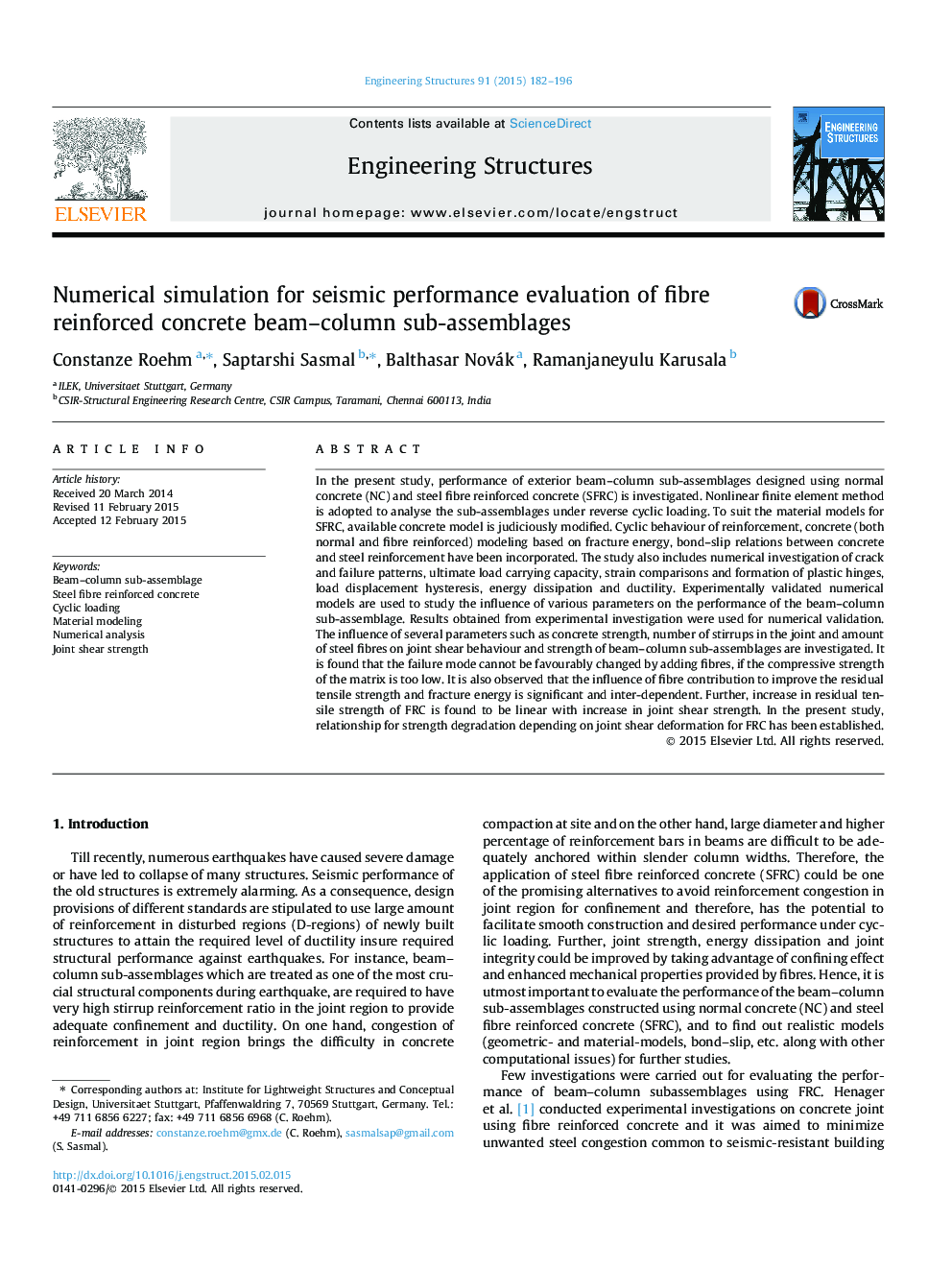| Article ID | Journal | Published Year | Pages | File Type |
|---|---|---|---|---|
| 6740379 | Engineering Structures | 2015 | 15 Pages |
Abstract
In the present study, performance of exterior beam-column sub-assemblages designed using normal concrete (NC) and steel fibre reinforced concrete (SFRC) is investigated. Nonlinear finite element method is adopted to analyse the sub-assemblages under reverse cyclic loading. To suit the material models for SFRC, available concrete model is judiciously modified. Cyclic behaviour of reinforcement, concrete (both normal and fibre reinforced) modeling based on fracture energy, bond-slip relations between concrete and steel reinforcement have been incorporated. The study also includes numerical investigation of crack and failure patterns, ultimate load carrying capacity, strain comparisons and formation of plastic hinges, load displacement hysteresis, energy dissipation and ductility. Experimentally validated numerical models are used to study the influence of various parameters on the performance of the beam-column sub-assemblage. Results obtained from experimental investigation were used for numerical validation. The influence of several parameters such as concrete strength, number of stirrups in the joint and amount of steel fibres on joint shear behaviour and strength of beam-column sub-assemblages are investigated. It is found that the failure mode cannot be favourably changed by adding fibres, if the compressive strength of the matrix is too low. It is also observed that the influence of fibre contribution to improve the residual tensile strength and fracture energy is significant and inter-dependent. Further, increase in residual tensile strength of FRC is found to be linear with increase in joint shear strength. In the present study, relationship for strength degradation depending on joint shear deformation for FRC has been established.
Keywords
Related Topics
Physical Sciences and Engineering
Earth and Planetary Sciences
Geotechnical Engineering and Engineering Geology
Authors
Constanze Roehm, Saptarshi Sasmal, Balthasar Novák, Ramanjaneyulu Karusala,
